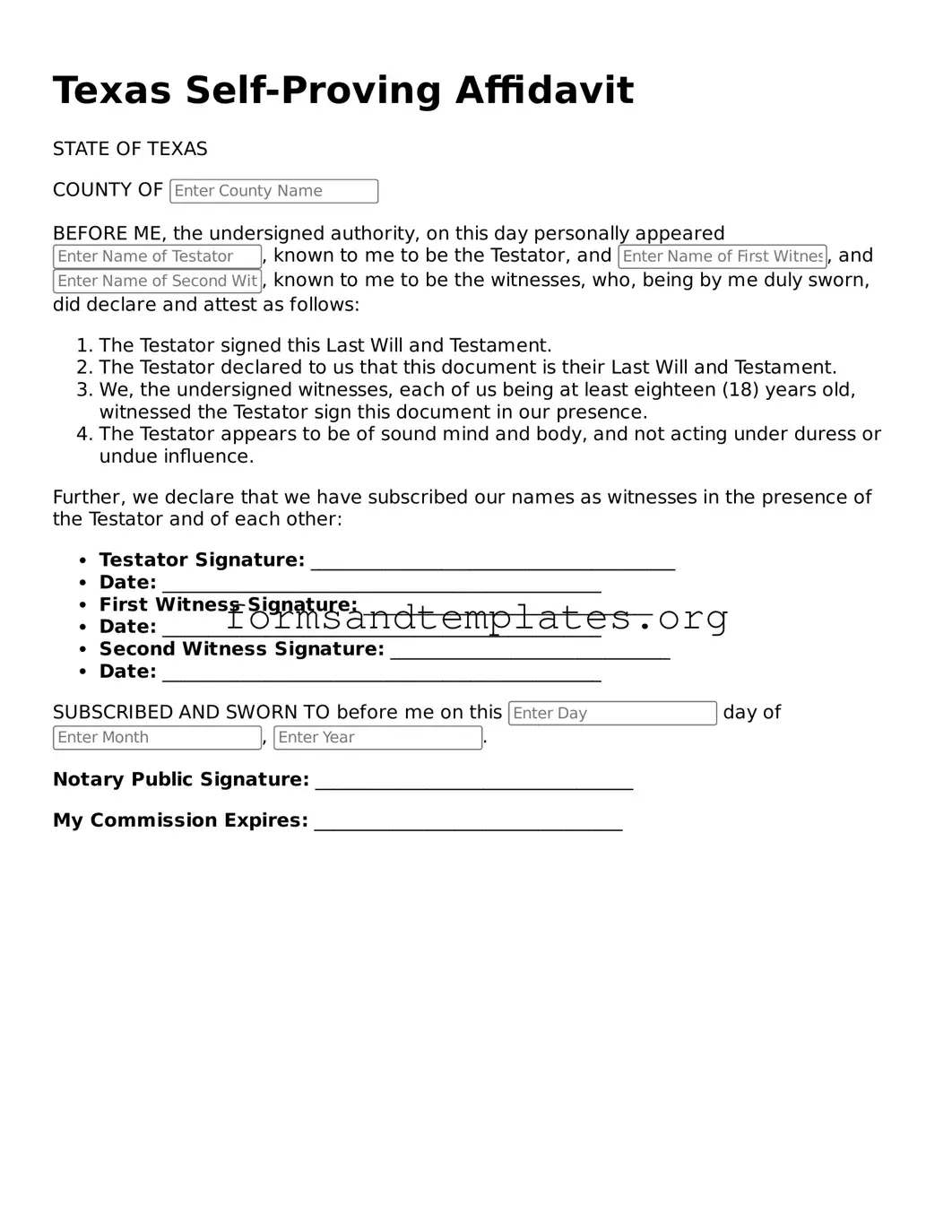What is a Texas Self-Proving Affidavit?
A Texas Self-Proving Affidavit is a legal document that allows a will to be validated without the need for witnesses to testify in court. This affidavit is typically signed by the testator (the person who created the will) and the witnesses in front of a notary public. It simplifies the probate process by affirming that the will was executed properly.
Why should I use a Self-Proving Affidavit?
Using a Self-Proving Affidavit can expedite the probate process. It eliminates the need for witnesses to appear in court, which can save time and reduce complications. This can be particularly beneficial if witnesses are unavailable or have passed away.
Who can sign a Self-Proving Affidavit?
The Self-Proving Affidavit must be signed by:
-
The testator, who is the person making the will.
-
At least two witnesses who were present at the time the will was signed.
-
A notary public, who will notarize the affidavit to verify the identities of the signers.
When should I create a Self-Proving Affidavit?
It is best to create a Self-Proving Affidavit at the same time you execute your will. This ensures that all necessary parties are present and can sign the affidavit, which will streamline the probate process later on.
Can I add a Self-Proving Affidavit to an existing will?
Yes, you can add a Self-Proving Affidavit to an existing will, but it must be done carefully. The affidavit should be executed in accordance with Texas law, and it’s advisable to consult a legal professional to ensure it is properly incorporated.
What happens if I don’t use a Self-Proving Affidavit?
If you choose not to use a Self-Proving Affidavit, the probate court may require witnesses to testify about the validity of the will. This can lead to delays and complications, especially if witnesses are unavailable or if there are disputes about the will's authenticity.
Is a Self-Proving Affidavit legally binding?
Yes, a properly executed Self-Proving Affidavit is legally binding in Texas. It serves as evidence that the will was signed in accordance with state laws, which helps facilitate the probate process.
Can I revoke a Self-Proving Affidavit?
Yes, you can revoke a Self-Proving Affidavit by creating a new will or a formal revocation document. It’s important to follow the legal requirements for revocation to ensure that your intentions are clear and enforceable.
What should I do if my witnesses are deceased?
If your witnesses are deceased, you may still be able to validate your will through other means. The court may accept other forms of evidence to prove the will’s authenticity. However, having a Self-Proving Affidavit in place from the time the will was created can prevent this issue.
You can find a Texas Self-Proving Affidavit form through various legal websites, local law libraries, or by consulting an attorney. It’s important to ensure that the form complies with Texas state laws to be valid.
